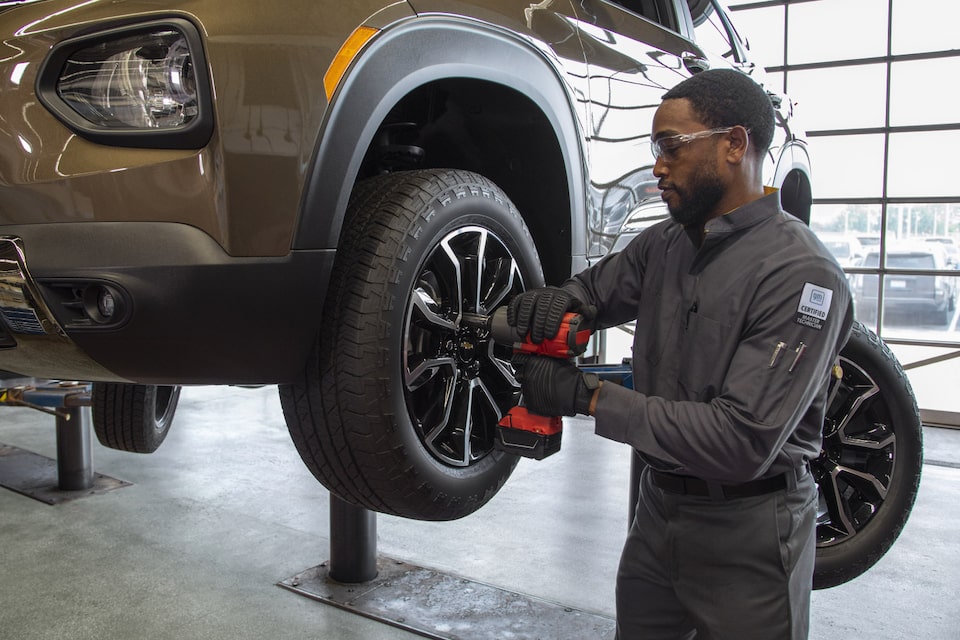Save Big with Mopar Tire Service Specials: Best Offers and Expert Treatment
Save Big with Mopar Tire Service Specials: Best Offers and Expert Treatment
Blog Article
Tire Service: The Impact of Weather Condition Conditions
When it comes to making certain optimum performance and safety on the road, comprehending the effect of weather problems on tire solution is critical. In this conversation, we will certainly explore the complex connection in between weather condition conditions and tire service, losing light on the relevance of weather-specific tire upkeep methods and factors to consider.
Warm and Tire Efficiency
When revealed to high temperatures, tires experience modifications in performance that can significantly influence car safety and handling. The warmth generated from prolonged driving or warm weather condition conditions triggers the tire rubber to soften, leading to lowered tread life and boosted wear.
Moreover, high temperatures can increase the procedure of tire aging, causing the rubber to deteriorate a lot more quickly. To reduce the impacts of warmth on tire efficiency, vehicle drivers ought to consistently examine their tire stress, revolve tires to ensure also wear, and check for any kind of indications of damages.
Cold Weather Effects
Cold climate problems can have a substantial effect on tire efficiency and safety and security. In cool climate, tires may also shed air stress much more swiftly, which can affect handling and gas effectiveness.
To reduce the effects of winter on tires, it is vital to on a regular basis inspect tire pressure and inflate them to the maker's suggested levels. Making use of winter months or all-season tires developed for chilly climate conditions can also boost traction and hold on icy or snowy roads - morris tire and alignment. Proper tire upkeep, including routine assessments for wear and damage, comes to be a lot more important throughout cooler months to ensure optimum performance and security
Rainy Conditions Impact
Throughout stormy problems, tire efficiency and safety and security can be significantly affected by the damp roadway surfaces and minimized exposure. The walk pattern of tires plays an important function in preserving grip on damp roadways. Tires with worn-out treads are more susceptible to hydroplaning, where a layer of water builds up in between the roadway and the tire surface area, causing loss of grip. To combat this, drivers should routinely inspect their tires for adequate walk depth and consider spending in tires especially created for damp problems.

Snow and Tire Security
Snow-covered roads position unique obstacles for chauffeurs, stressing the Homepage significance of correct tire choice and upkeep. When driving in snowy conditions, having the ideal tires can make a significant difference in safety and security and performance. Wintertime tires are designed with special rubber substances and tread patterns to supply far better traction on snow and ice contrasted to all-season tires. The much deeper treads and sipes of winter months tires assist grasp the road better, decreasing the danger of gliding and sliding.
In enhancement to utilizing winter months tires, it is essential to ensure they are correctly pumped up. Winter can trigger tire stress to go down, impacting grip and handling (tire shop morris). Frequently checking and maintaining the right tire stress is necessary for ideal efficiency in snowy problems

Weather-Related Tire Maintenance
When confronted with various weather, correct tire maintenance comes to be a vital aspect of automobile safety and efficiency. Weather-related tire maintenance incorporates a series of techniques focused on making certain optimal tire feature and durability in various weather situations. One vital element of weather-related tire upkeep is tire pressure guideline. Rising and fall temperatures can trigger tire stress to differ, affecting grip and fuel effectiveness. Regularly inspecting and readjusting tire stress according to manufacturer recommendations is necessary for secure driving in altering weather. Additionally, tire walk depth plays a considerable duty in dealing with different weather condition aspects. Tires with ample tread deepness give better grip on wet or icy roads, decreasing the danger of hydroplaning or skidding. Evaluating tire tread routinely and replacing tires when tread wear reaches a specific depth is important for maintaining traction and stability in adverse weather. By prioritizing weather-related tire maintenance, drivers can improve safety and security, boost automobile efficiency, and extend the lifespan of their tires.
Final Thought
To conclude, weather have a significant effect on tire efficiency and safety. From warmth impacting tire stress and put on to winter reducing traction, it is important to take into consideration the go to the website weather when maintaining and utilizing tires. Stormy conditions can lower grip and cause hydroplaning, while snow can increase the threat of crashes if tires are not correctly equipped. Weather-related tire maintenance is vital in making sure optimum performance and safety and security when traveling.
In this conversation, we will check out the detailed partnership between weather conditions and tire solution, shedding light on the relevance of weather-specific tire upkeep practices and considerations.

Report this page